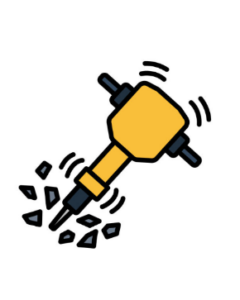Why is my balance giving fluctuating readings? (Vibration)

Vibration can interfere with weighing performance of a balance.
Keywords: laboratory balance, precision weighing, vibration, environmental factors, calibration, laboratory equipment
Introduction
Laboratory balances are essential tools for accurate measurements in scientific research, quality control, and other industries. However, their performance can be significantly affected by environmental factors, particularly vibration. Understanding the impact of vibration on weighing accuracy is crucial for ensuring reliable results.
What is Vibration?
Vibration is the mechanical oscillation of a system about an equilibrium point. In a laboratory setting, vibration can originate from various sources, including:
- External Sources:
- Traffic, construction work, and nearby machinery
- Air conditioning units and ventilation systems
- Foot traffic and human movement
- Internal Sources:
- Laboratory equipment, such as centrifuges and mixers
- Inefficient benchtop design and unstable surfaces
How Vibration Affects Weighing Performance
Vibration can negatively impact the performance of a laboratory balance in several ways:
- Reduced Precision:
- Vibration causes fluctuations in the balance’s readings, leading to decreased precision and uncertainty in measurements.
- Increased Weighing Time:
- The balance’s internal weighing mechanism may struggle to stabilize, resulting in longer stabilization times and reduced throughput.
- Systematic Errors:
- In severe cases, vibration can introduce systematic errors into measurements, leading to inaccurate results.
Mitigating the Effects of Vibration
To minimize the impact of vibration on laboratory balance performance, consider the following strategies:
- Choose a Stable Location:
- Place the balance on a sturdy, vibration-dampening surface, such as a vibration isolation table or a solid benchtop away from sources of vibration.
- Consider Environmental Factors:
- Avoid placing the balance near sources of vibration, such as air conditioning units, centrifuges, or busy corridors.
- Regular Calibration:
- Calibrate your balance regularly to ensure accuracy and compensate for any potential drift caused by vibration or other factors.
- Use Anti-Vibration Mats:
- Place anti-vibration mats under the balance to further reduce the transmission of vibrations.
- Optimize Laboratory Design:
- Consider the overall laboratory layout to minimize vibration sources and their impact on sensitive equipment.
Conclusion
By understanding the impact of vibration on laboratory balance performance and implementing appropriate mitigation strategies, you can significantly improve the accuracy and reliability of your weighing results. By investing in a stable environment, regular calibration, and proper equipment maintenance, you can ensure that your laboratory balance delivers consistent and precise measurements.
© 2024 European Instruments Ltd

